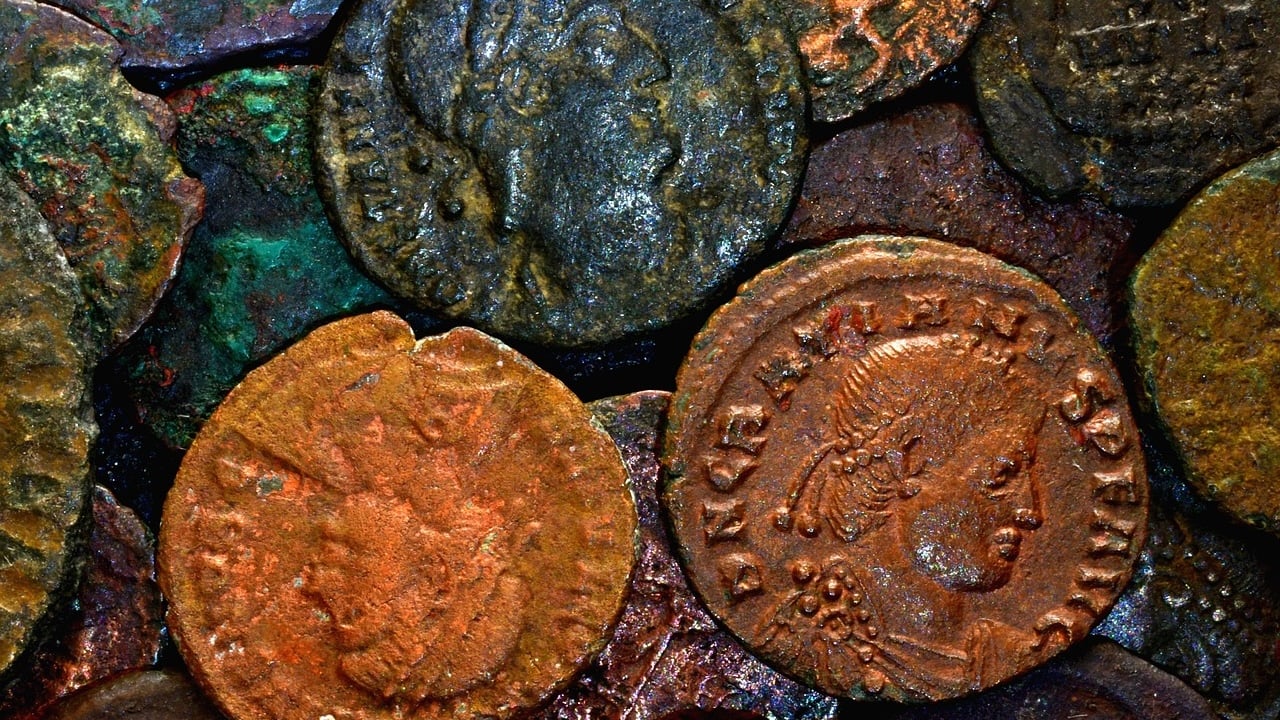(Mike Maharrey, Money Metals News Service) If archeologists 2,000 years from now find a jar of U.S. quarters minted in 2025, how excited would they be?
I’m sure they would find it interesting from a historical perspective. But how much would those quarters really be worth?
I got to thinking about this after reading about a recent archeological find in the Netherlands. Two people searching a field with metal detectors found hundreds of Roman-era gold and silver coins.
According to CBS News, the find included a mix of Roman and British coins. The majority were silver Roman denarii minted between 200 B.C. and 47 A.D. There were also 72 gold aurei dated from 18 B.C. and 47 A.D. These gold coins showed no sign of wear and were likely freshly minted according to archeologists who analyzed the find.
The British coins included what are known as “starters,” minted from an alloy of gold, silver, and copper. These coins were inscribed with the face of the Celtic king Cunobelinus, who reigned between 9 and 40 A.D.
The news report didn’t say how much the coins were worth. From a historical standpoint, they are arguably priceless. But I did a little digging to estimate the value of the gold and silver.
A Roman gold aureus typically weighed around 7.8 grams – just under a quarter ounce. That would make the gold content of the coins worth about $735 at today’s gold spot price.
The weight of a silver Roman denarius varied over time from between 4.5 and 3.4 grams. For the sake of calculation, we’ll assume the coins found in the Netherlands averaged 4 grams. At the current silver price, the melt value of these silver coins would be around $4.24, a bit less than the current melt value of a pre-1965 silver (90%) quarter ($5.95).
So, not even taking into account the historical value, our intrepid metal detectorists found nearly $53,000 in gold and $1,696 in silver.
That brings us back to my original question. How much would a similar find of 2025 quarters be worth 2,000 years from now?
Well, how excited do you get about copper?
Copper is worth about 29 cents per ounce today.
Under the Coinage Act of 1965 signed by President Lyndon B. Johnson, the U.S. Treasury removed all the silver from dimes, quarters, and half-dollars. Instead, the government mints coins from “composites, with faces of the same alloy (zinc) used in our 5-cent piece that is bonded to a core of pure copper.”
Today, you will sometimes hear coins minted before 1965 referred to as “junk silver.”
In reality, we should call modern American coins junk.
So, if a future archeologist found pre-1965 quarters, he would have quite a windfall in silver. However, if he found modern quarters-not so much.
That’s because gold and silver are real money. They hold their value over time – even 2,000 years!
Finding modern fiat currency in the future won’t yield much in the way of value, but at least future archeologists can revel in the historical significance of finding a currency that was devalued into nothingness.
Mike Maharrey is a journalist and market analyst for MoneyMetals.com with over a decade of experience in precious metals. He holds a BS in accounting from the University of Kentucky and a BA in journalism from the University of South Florida.

